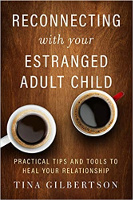
Image by Gerd Altmann
Each of us has thoughts, feelings, opinions, preferences, and needs that won’t necessarily jibe with those of important others. Sometimes there will be inevitable conflicts to navigate. The presence of conflict doesn’t mean a relationship has come to an end, or even that it’s unhealthy. It’s how conflict is handled that makes relationships healthy or unhealthy.
When conflict entails threats of (or actual) physical violence, unproductive silence, name-calling or character attacks, it’s damaging and unproductive. Such behaviors don’t bring people closer or build trust. Also, talking to Person B about a problem you’re having with Person A instead of talking to Person A directly about the problem (called triangulation, because Person B forms a triangle with you and Person A) can erode trust and goodwill between all three people. Even though there’s no overt aggression, there’s a quiet erosion of bonds.
When we don’t know a better way to handle conflict and we don’t want to be aggressive, we tend to avoid confrontation in the interest of lessening potential damage. Ironically, the harder we work to avoid conflict in important relationships, the less we tend to feel close and secure in them.
Practicing Assertive Communication
Instead of avoiding confrontation, we can practice assertive communication. This can help us in many situations:
- handling conflict
- structuring important conversations
- expressing our needs
- holding our boundaries
- improving our self-esteem
- knowing each other better
- trusting each other more
So what does assertiveness look like? I’ll offer a few ideas here, but please explore the topic further online or at your local library. Better yet, take a class or workshop. I taught assertiveness to various groups for years because I wanted to spread the word about its effect on quality of life. Once learned and practiced consistently, assertiveness is a powerful skill.
What Assertiveness Looks Like
Unlike communication that’s passive (suffering in silence), or aggressive (“You always/never do___________!” or “You’re such a ____________!”), or passive-aggressive (“forgetting” to do something you resent being asked to do), assertiveness calmly and politely states your boundaries and needs in a way that respects the other person as well as yourself.
Assertive communication is direct, meaning you speak to the person you need to address, not someone else; centered on communicating your own thoughts and feelings; respectful and responsive; and firm, meaning your position doesn’t change just because someone else doesn’t like it.
The examples below show how Assertive Anne handles herself.
Scenario 1
Anne: May I have this salad with the dressing on the side?
Waiter: The salad comes already dressed.
Anne: I didn’t realize that. Is it possible to get it with the dressing on the side?
Waiter: I’ll ask the chef.
Anne: Thank you.
Scenario 2
Friend: Can I borrow that book when you’ve finished reading it?
Anne: No, the last two books I lent you never made it back to me.
Friend: I promise I’ll return this one right away. Honest.
Anne: I know you have good intentions, but the answer is still no.
Friend: It’s just a book!
Anne: It may be just a book, and I don’t want to hurt your feelings, but I’m still not willing to lend it.
Scenario 3
Someone stands in front of Anne, who’s waiting in line at the checkout counter.
Anne: Hi. I’m next in line.
Rude person: (Ignores her)
Anne: Excuse me; I’m next in line.
Rude person: What’s your problem?
Anne: You stepped in front of me even though I was here first. I’m next in line.
Rude person: (Ignores her)
Anne (To cashier): I’m next in line even though this person is standing in front of me.
In scenario 3, Anne appeals to an authority figure — in this case, the cashier — only after getting nowhere with direct communication. Being assertive should work for you easily nine out of ten times — when you’re dealing with people outside the family. With family members, plan on getting resistance nine times out of ten when you first start using this style of communication.
Scenario 4
Checkout clerk: Would you like add a dollar to your purchase for charity?
Anne: No.
It can be empowering to utter the simple word no, without excuses or apologies. You can smile pleasantly while you say it. But it’s not necessary to dress up your answer with extra words.
Speaking and Acting Assertively
When you know how to speak and act assertively, you feel more in control when situations arise. It becomes easier to respond, rather than react. In order to act assertively, you have to believe that you’re entitled to your position, whatever it is, and to know your position: what you want, what you’ll tolerate, and so on.
These principles may sound simple, but they can perplex the best of us in practice. Try reading a book or taking a class about assertiveness with a friend, and practice the exercises together.
Healthy Entitlement
Consider the assertion above: “You’re entitled to your position.” The terms entitled and a sense of entitlement both have negative connotations for many people. But it’s important for adults to have a strong enough sense of entitlement to claim and act on the rights we hold, and to protect our personal boundaries. It’s only an overreaching of entitlement that makes the concept questionable.
The idea of entitlement is distasteful mostly to those who mistakenly believe they’re not entitled to anything. If you’re nervous or skeptical about entitlement, that’s all right. All I ask is that you open your mind to the possibility that more is due to you than you’ve been taking.
Following is a list of some of the rights you have that you might not have thought about. You can choose whether, when, and with whom to exercise them. Sometimes exercising your rights will bring consequences. Every action you take has repercussions — but so does every action you don’t take.
Claiming these rights is optional, and you’ll probably make a conscious choice not to exercise some of them. Whether you claim the right or not, as an adult, you’re entitled to do all of the following:
- put your needs first
- pick your friends
- decide based on emotion, not logic
- refuse to answer questions you don’t want to answer
- change your mind
- choose how you spend your time
- choose how you spend your money
- seek better health, or not
- make requests — even unreasonable ones
- refuse requests — even reasonable ones
This list isn’t exhaustive; it’s just a sampling of your freedoms. How does reading them make you feel? If any of these seem wrong to you, try putting this in front: “I don’t have the right to...”
Does it seem more appropriate not to be allowed? What’s your source of information about what you’re due as an adult? Is the information accurate? How well does it serve you? What might happen if you claimed the license to all the rights mentioned above?
Embracing Assertiveness
Embracing assertiveness can be a challenge at the best of times, let alone when you’re asserting rights you aren’t used to exercising. Practice first in situations where it’s easier for you, and work up to ones that feel more challenging.
Even if you succeed in developing a healthy sense of entitlement, you still have to make decisions about where you stand, what you want, and what you will and won’t put up with. Don’t wait till you’re in the middle of a conversation to try to figure those out. Take the time you have between contact with your child to think about these things. Tease apart your longing for connection from your need to set good boundaries.
If you find it hard to be assertive, forgive yourself. You learned somewhere along the line that it wasn’t appropriate for you to assert your rights. But you can learn differently. It just takes courage, practice, and time.
Reprinted with permission of the publisher,
New World Library, Novato, CA. ©2020 by Tina Gilbertson.
www.newworldlibrary.com or 800-972-6657 ext. 52.
Article Source
Reconnecting with Your Estranged Adult Child: Practical Tips and Tools to Heal Your Relationship
by Tina Gilbertson.
 Parents whose adult children have cut off contact wonder: How did this happen? Where did I go wrong? What happened to my loving child?
Parents whose adult children have cut off contact wonder: How did this happen? Where did I go wrong? What happened to my loving child?
Psychotherapist Tina Gilbertson has developed techniques and tools over years of face-to-face and online work with parents, who have found her strategies transformative and even life-changing. She cuts through the blame, shame, and guilt on both sides of the broken relationship. Exercises, examples, and sample scripts empower parents who have felt powerless. The author shows that reconciliation is a step-by-step process, but the effort is well worth it. It is never too late to renew relations and experience better-than-ever bonds.
Click here for more Info and/or to Order this Book. Also available as a Kindle edition and as an Audiobook.
More books by this author
About the Author
 Tina Gilbertson, MA, LPC, is a licensed professional counselor specializing in family estrangement. She has been quoted in hundreds of media outlets, including Fast Company, the New York Times, the Washington Post, the Chicago Tribune, and Real Simple.
Tina Gilbertson, MA, LPC, is a licensed professional counselor specializing in family estrangement. She has been quoted in hundreds of media outlets, including Fast Company, the New York Times, the Washington Post, the Chicago Tribune, and Real Simple.
She hosts the Reconnection Club Podcast.
Read Tina's estrangement-focused blog posts at reconnectionclub.com/blog.



























